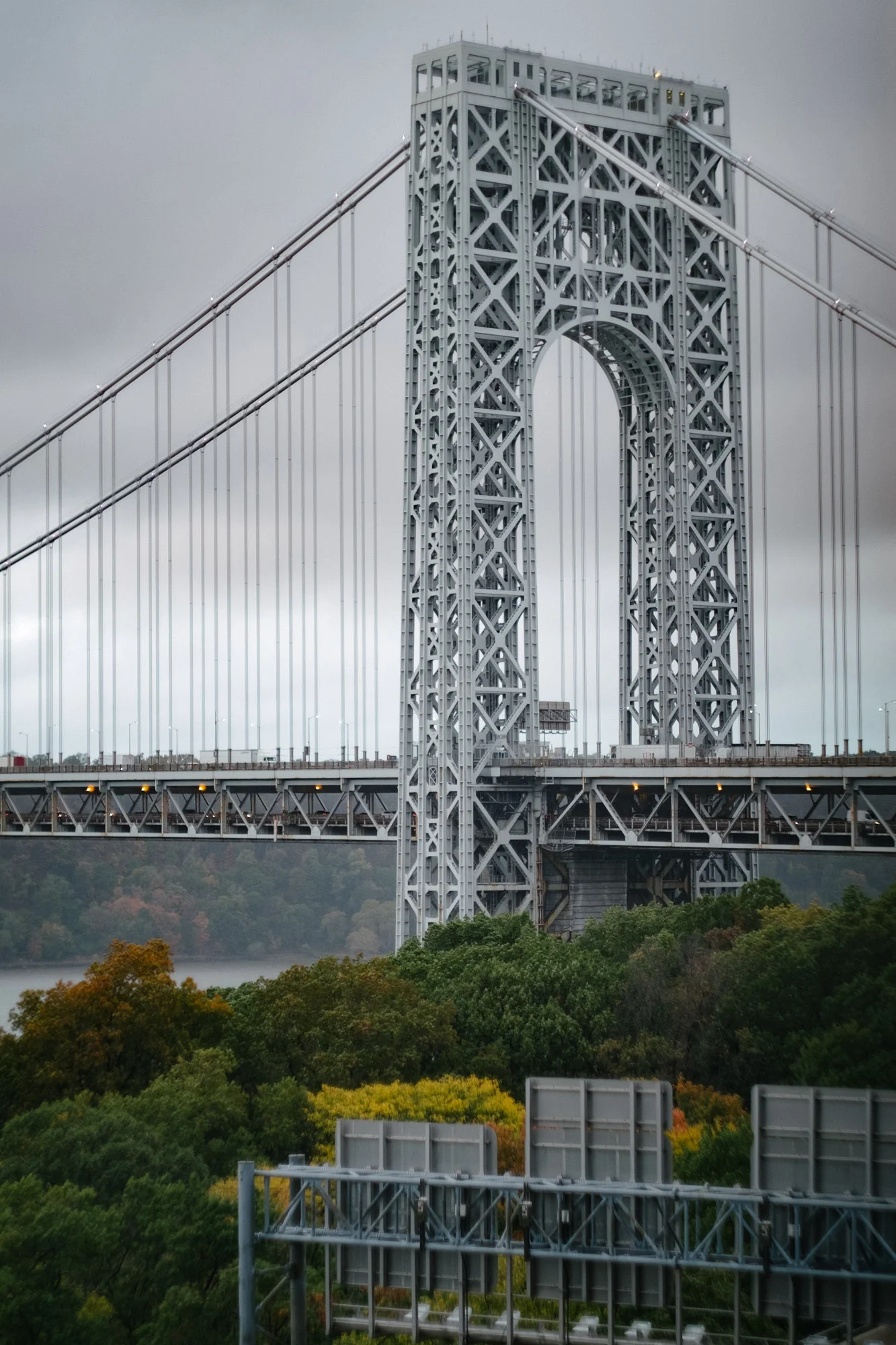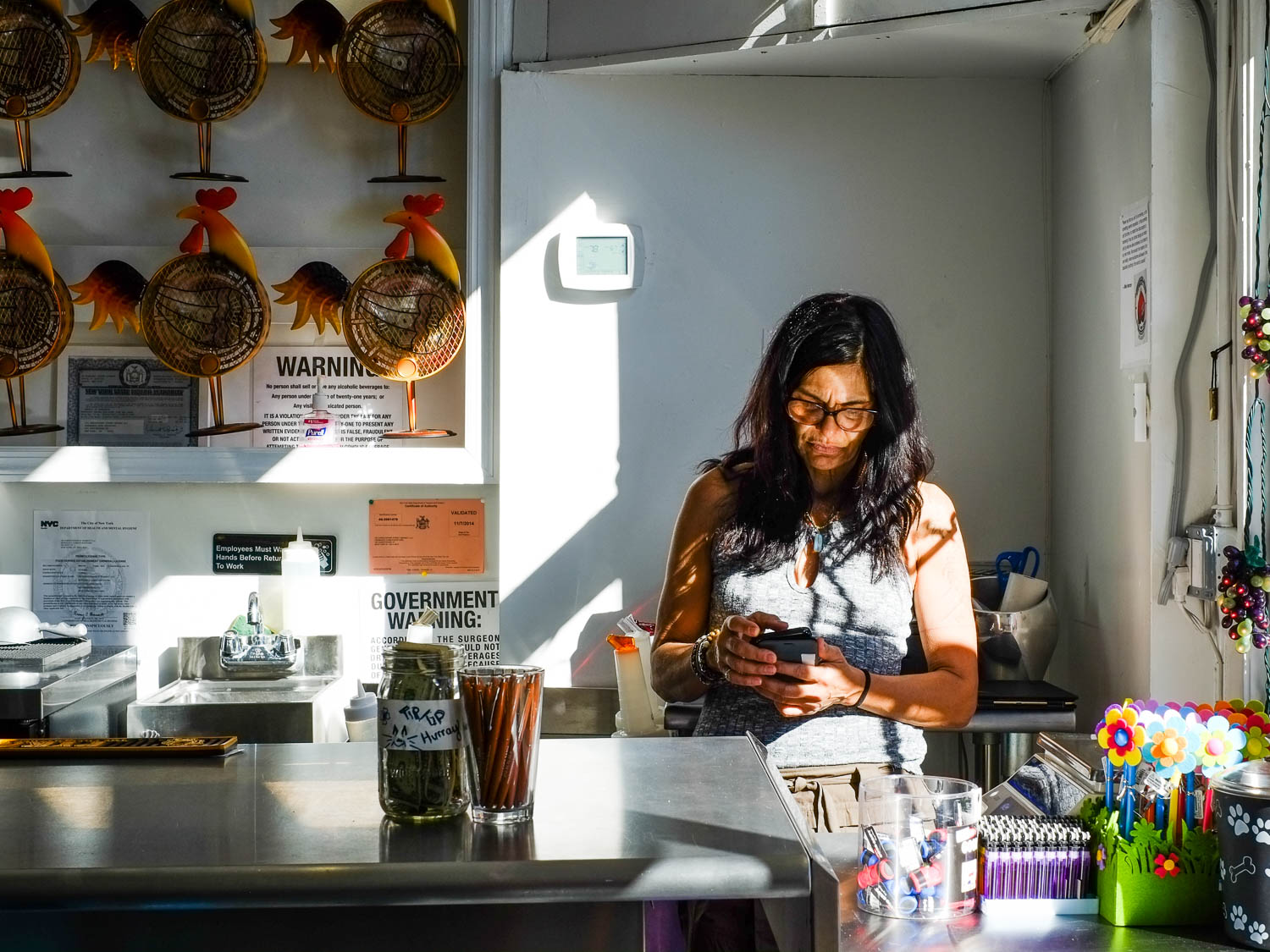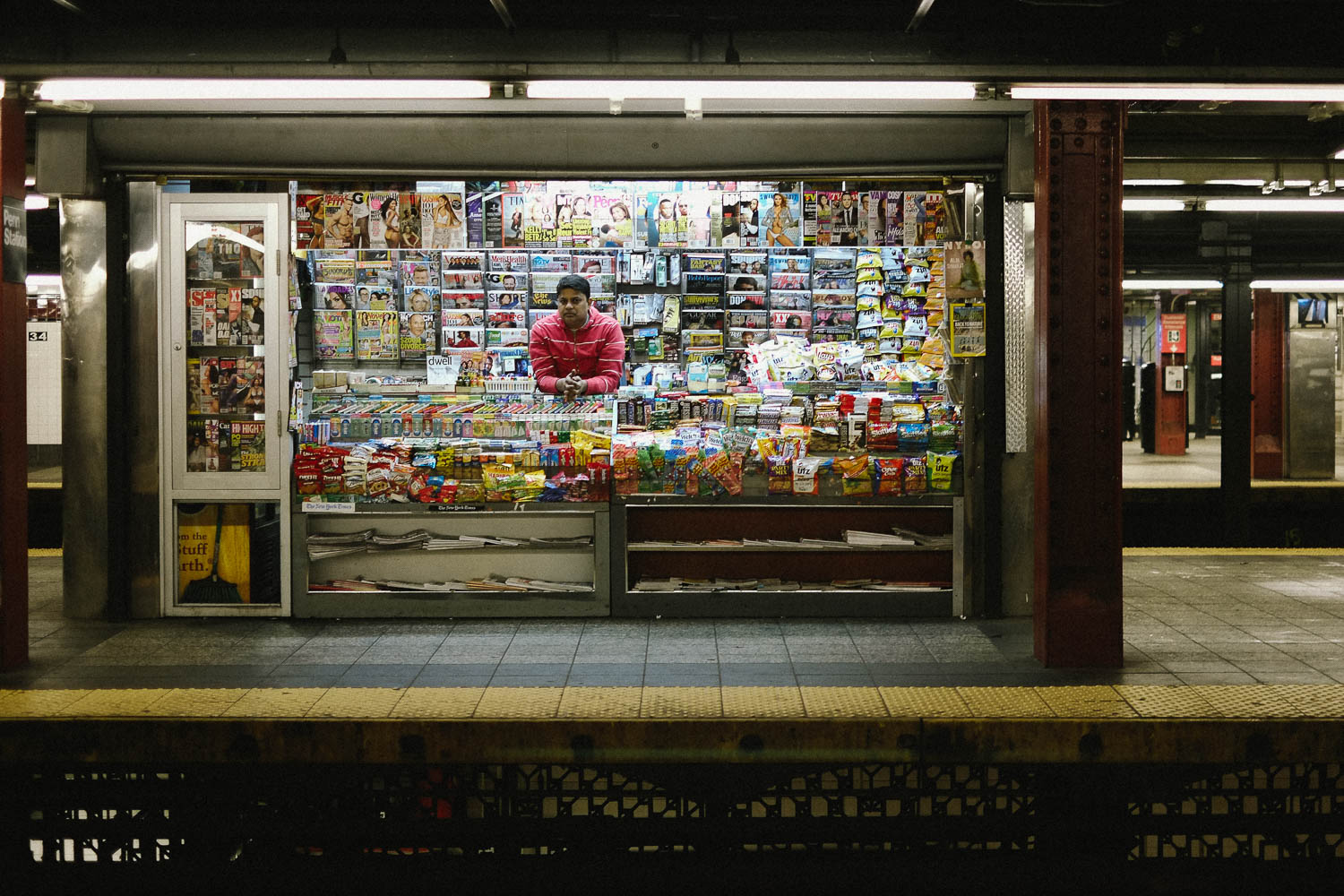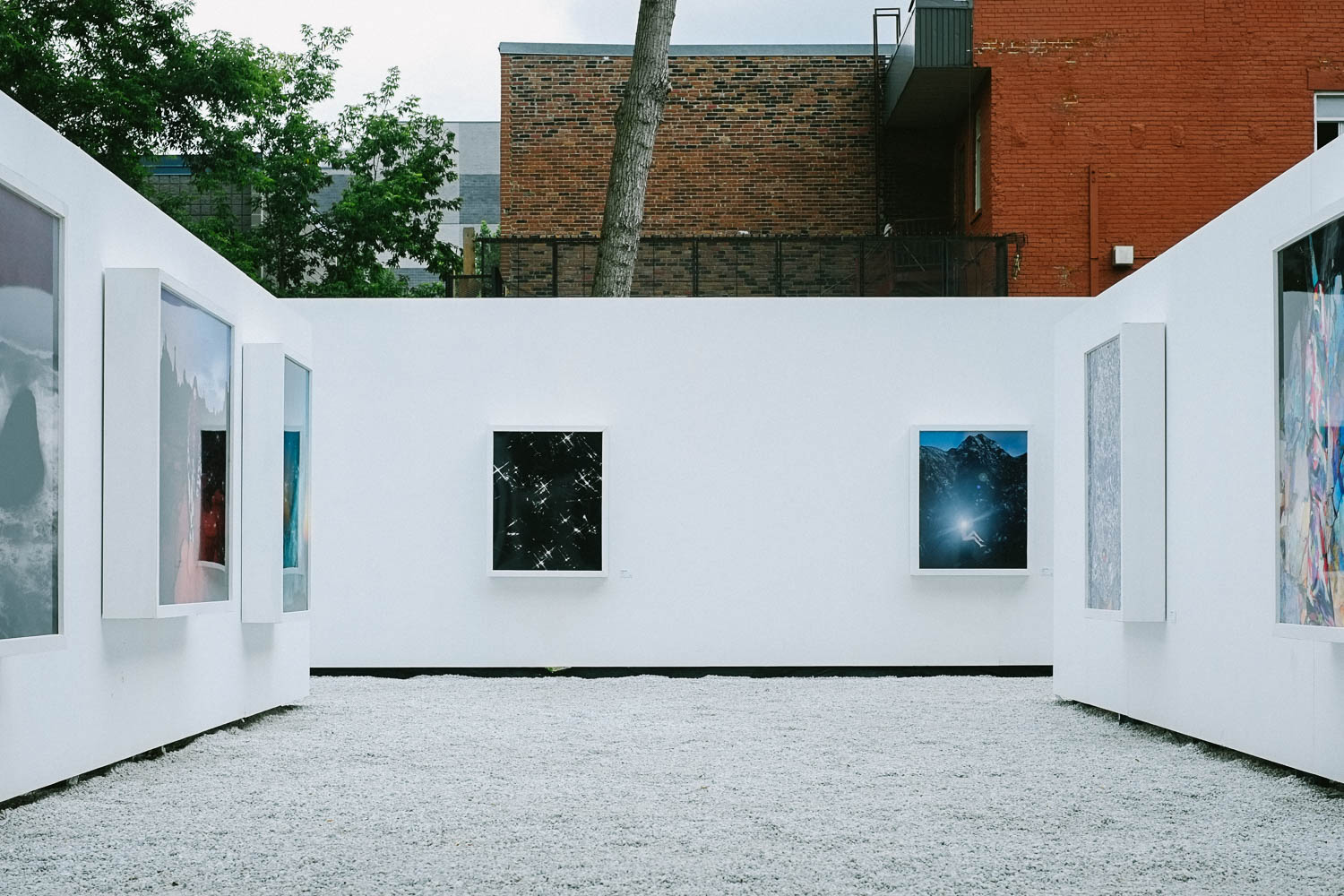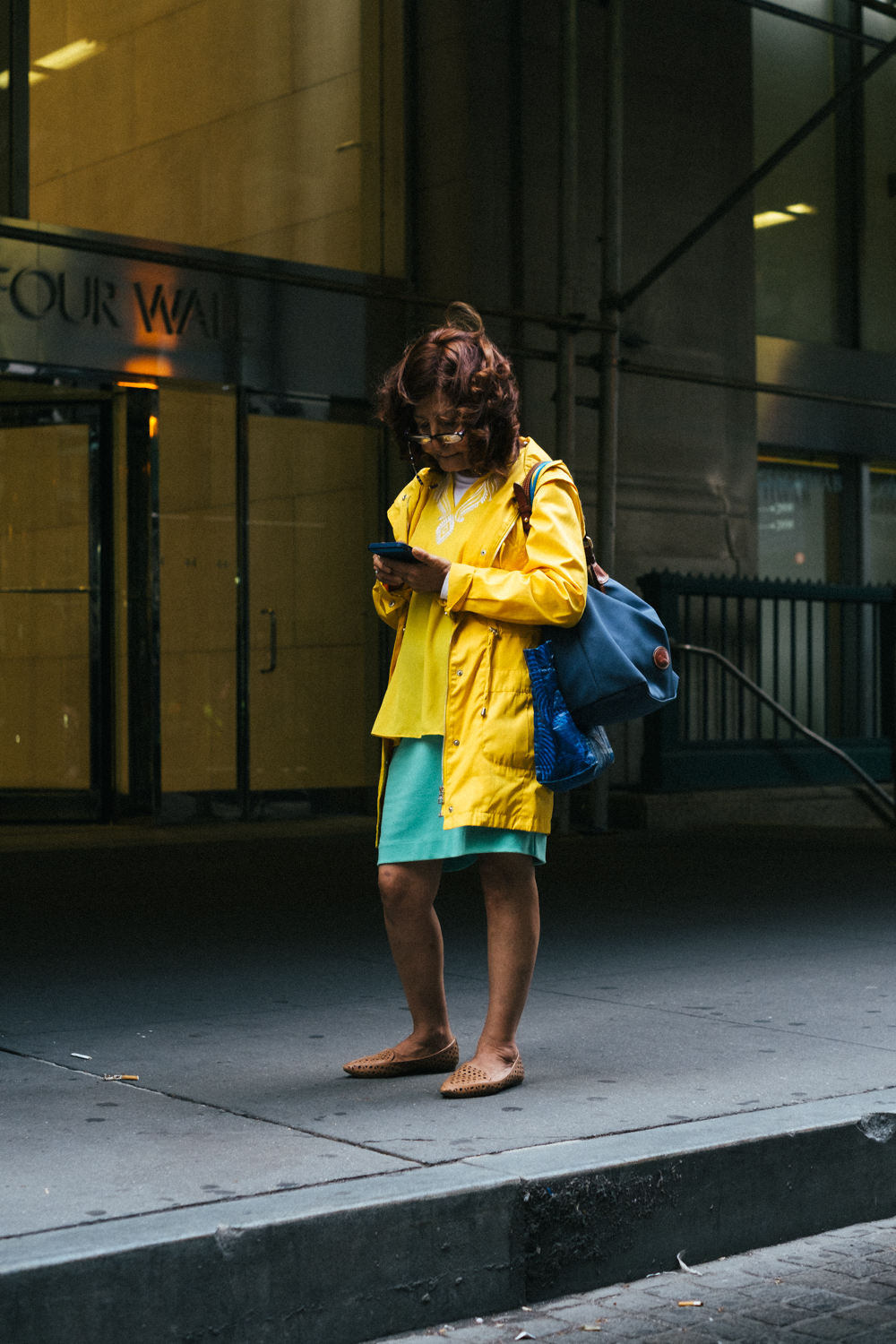Fuji X-pro1 Review: Photography is Fun Again!
If I hear the phrase "the best camera is the one you have with you" one more time, I'm going to set my studio on fire.
UPDATE: This camera made the list on our “Best Mirrorless Camera” buying guide and “Best Fuji Camera Bodies” buying guide.
It's true, I get it – getting the shot is the ultimate goal. But as a photographer, I've spent years rewiring my brain to obsess over image quality and artistic control of my exposure. The idea of an iPhone snap leaves me totally uninspired. If I'm not using my high end gear to produce a magazine-ready image, I'm not interested.
Consequently, my Canon 5D MkII has been collecting dust over the past three years. I live in New York City, where there's lots to photograph. But lugging around 10 pounds of metal and glass for the off-chance of a good candid opportunity? My desire to shoot faded every time I was confronted with the prospect of carrying my DSLR around with me, and I'd be damned before I took a serious photo with my iPhone.
Something had to change.
The Fuji X-Pro 1. Image courtesy of B&H.
Nicole shooting Fuji. Fuji X-Pro 2, Fuji 35mm f/1.4
To solve my problem, I managed to snag a Fuji X-pro1 and a Fujinon 35mm 1.4 from Amazon. I wasn't expecting much. Fuji's X-series mirrorless digital cameras, sporting a gorgeous retro design and top quality catalogue of lenses, have been a growing force in the marketplace for the past few years. But could a third-place manufacturer's mirrorless camera really compete with the full frame 5DMKII I?
Technical Specs of the Fuji X-pro1:
Megapixels: 16
Max ISO: 6400
File format: JPG, .RAF
Storage: 1 SD Card slot
Video capable: Yes (but you'll get better results with your iPhone)
Lens Mount: Fujifilm X Mount
Film Emulation: PROVIA/STANDARD, Velvia/VIVID,
ASTIA/SOFT, PRO Neg Hi, PRO Neg. Std, MONOCHROME, MONOCHROME+Ye
FILTER, MONOCHROME+R FILTER, MONOCHROME+G FILTER, SEPIA)
Fuji X-pro1 Review:
At first touch, the ergonomics of the X-pro1 sort of blew me away. It's housed in a gorgeous metal body, with a tactile knob for adjusting your shutter speed. It feels substantial in your hand, like a real workhorse – and yet it clocks in at under 16 ounces.
The Fuji X-pro1 comes equipped with an optical viewfinder (OVF) and an electronic viewfinder (EVF). The EVF is a technological breakthrough: the focus peaking feature opens the photographer up to an entire world of vintage, manual focus lenses.
The rangefinder design is beloved for a reason: pulling this boxy little camera up to my eye and feeling the thunk of the shutter somehow made me feel like I was taking "real" images (an arbitrary distinction, but a feeling worth noting nonetheless).
Hudson River Park, Manhattan. Fujifim X-pro1, Fujinon 35mm f/1.4. 1/125 @ f/8 ISO 100
Unfortunately, the image quality of the Fuji X-pro1 doesn't really compare to a full frame Canon. With only 16 megapixels to work with, the X-Trans CMOS sensor puts up a great fight – but you'll never get a comparable creaminess, depth of field, or level of detail with this small of a sensor. Somehow though, I found myself not caring much at all.
Catherine from Making Babies in Brooklyn in Williamsburg. Fujifilm X-pro1, Fujinon 35mm f/1.4. 1/125 @ f/1.4 ISO 200
Nicole at Vanessa's Dumplings in the East Village Manhattan. Fujifilm X-pro1, Fujinon 35mm f/1.4. 1/125 @ f/1.8 ISO 1250
The Fuji X-pro1 changed the way I shot:
Walking around with this light little rangefinder, I noticed a change in my behavior. I spent all day shooting exclusively .jpg. I wasn't worried about pulling the maximum amount of dynamic range in post, or getting the white balance spot on – I was simply shooting in .jpgs, and producing print-worthy photos.
The color emulation in-camera glossed my images with a gorgeous filmic glow, and even with the color profiles, I was able to shoot extreme light conditions (and push the contrast in post) without losing any of the dynamic range I would have wanted.
Water and Wall Street in Manhattan during a sunset. Fujifilm X-pro1, Fujinon 35mm f/1.4. 1/125 @ f/4 ISO 200
Two Bridges in Manhattan during a sunset. Fujifilm X-pro1, Fujinon 35mm f/1.4. 1/250 @ f/8 ISO 200
Of course, I eventually shot in raw. The dynamic range you can pull from those files is truly impressive, considering the humble size of the sensor.
Wall Street Manhattan. Fujifilm X-pro1, Rokinon 12mm f/2. 1/30 @ f/2 ISO 1000
George Washington Bridge in Manhattan. Fuji X-pro1, Helios 44-4.
Here's why the Fuji X-pro1 isn't a perfect camera:
The battery life isn't great. I got about 250 shots out of one charge, so it's worth bringing an extra if you're going to be out all day.
The autofocus is quick, but it sure can hunt – even on a bright, contrasty scene. Frustratingly, it sometimes insists on locking in on the plane of distance directly behind your subject.
The megapixel count is below average, so you'll have a hard time cropping in post.
Lightroom handles fuji raws poorly. It works, but it's slow.
The image quality is good enough. You will rarely feel held back by the color rendering or the sharpness... but it won't exactly blow you out of the water.
Chinatown Manhattan. Fujifilm X-pro1, Fujinon 35mm f/1.4. 1/125 @ f/8 ISO 200
Christopher Street, Manhattan. Fuji Xpro-1, Fujinon 35mm f/1.4. @ 1/125 f/9 ISO 200
Should you buy a Fuji X-pro1?
For the money, the Fuji X-pro1 is the definitive street and travel camera. It's durable, lightweight, snappy, and the analog shutter speed ring dial (coupled with the manual aperture ring on Fuji lenses) gives you lightning-fast control over your exposures. You can certainly pull editorial quality images out of this sensor with a bit of work, but you're better off having a dedicated camera for that (consider reading the Sigma DP2m review for a cheap powerhouse for studio work).
Staten Island Ferry to Manhattan. Fujifilm X-pro1, Fujinon 35mm f/1.4. 1/125 @ f/2 ISO 200
Penn Station Manhattan. Fujifilm X-pro1, Fujinon 35mm f/1.4. 1/125 @ f/5.6 200 ISO
Rue St. Catherine in Montreal. Fujifilm X-pro1, Fujinon 35mm f/1.4. 1/125 @ f/5.6 200 ISO
Fuji Lens Reviews for Your Fujifilm Mirrorless Camera
If you're hunting for the perfect lens to go with your Fuji body, check out a comprehensive list of our Fuji lens reviews below:
Best Fuji Lenses for Portrait: Buying Guide – A rundown of the top lenses tailor-made to deliver perfect portraits.
Fujinon XF 90mm F/2 Lens Review – A weather-resistant lens with stunning optics, perfect for portraiture, wildlife, landscape, and more
Fujinon 35mm f/1.4 Lens Review – Super fast and ideal for all-around/travel photography with a dream-like bokeh and tack-sharp center
Rokinon 12mm f/2 Lens Review – A manual focus with superb image quality and a creative focal length
Fuji XF 16mm f/1.4 Lens Review – A versatile wide-angle and one of the top performers in the entire Fuji line-up
Helios 44-4 58mm f/2 Lens Review – A vintage Russian telephoto prime with a distinctive bokeh










